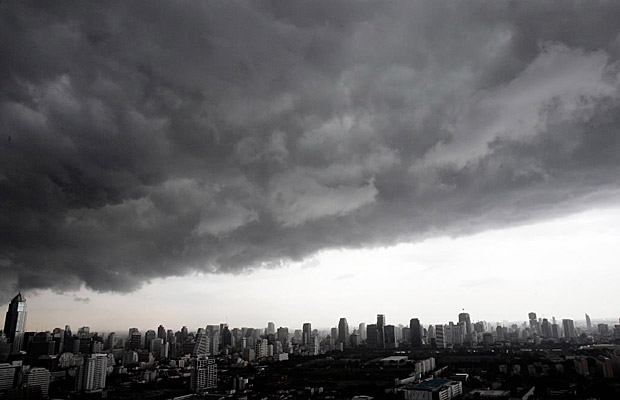Who can we blame for this year’s extreme weather?
So far this winter (or summer, depending on which hemisphere you are in) we have witnessed record snowfalls in Europe and parts of North America, while Australia has seen flooding that will require a cleanup of “postwar proportions.”
Should we raise a fist in the sky yelling “damn you La Niña” or should we curse El Niño? This is not a gender issue by the way. We are talking about the abnormal ocean temperatures in the eastern Pacific Ocean.
This year the weather prognosticators are pointing the finger at La Niña, which is causing colder-than-usual ocean water in the eastern Pacific, bringing increased precipitation to southeast Asia and Australia and more snow for the northern hemisphere.
El Niño was last year’s weather story, making 2010 one of the warmest years on record. Remember those balmy temperatures at the beginning of the Winter Olympics in Vancouver?
Our friends at Environment Canada, offers these explanations on the two extreme weather patterns:
Why La Niña Occurs
La Niña, meaning “the little girl”, names the appearance of cooler than normal waters in the eastern and central Pacific Ocean. Sometimes called El Viejo, anti-El Niño, or simply "a cold event", it is the antithesis of El Niño.
La Niña is thought to occur due to increases in the strength of the normal patterns of trade wind circulation. Under normal conditions, these winds move westward, carrying warm surface water to Indonesia and Australia and allowing cooler water to upwell along the South American coast. For reasons not yet fully understood, periodically these trade winds are strengthened, increasing the amount of cooler water toward the coast of South America and reducing water temperatures.
The increased amount of cooler water toward the coast of South America causes increases in the deep cloud buildup towards southeast Asia, resulting in wetter than normal conditions over Indonesia during the northern hemisphere winter.
The changes in the tropical Pacific are accompanied by large modulations of the jet stream within the middle latitudes, shifting the point at which the stream normally crosses North America. The shifted jet stream contributes to large departures from the normal location and strength of storm paths. The overall changes in the atmosphere result in temperature and precipitation anomalies over North America which can persist for several months.
For more on La Niña from Environment Canada, click here.
Quick Facts on El Niño
The phrase "El Niño" refers to the Christ Child, and was coined by fishermen along the coasts of Ecuador and Peru to describe the warm ocean current that typically appeared around Christmas time and lasted for several months.
El Niño is the second largest driver of the world’s weather, second only to normal seasonal warming and cooling, which also brings changes in precipitation patterns.
El Niños appear approximately every two to seven years. They typically last 12 to 18 months. In the early 1990s, a protracted El Niño persisted for four years.
El Niños have been documented since the early 1700s. More detailed observations from ships led to instrumental record keeping in the earlier half of the twentieth century. It is only since the 1970s, however, that scientists began linking El Niño to massive flooding and severe droughts around the world.
About every four to five years, a pool of cooler-than-normal water develops off South America. The effects of this cooler water are called La Niña. This usually brings colder winters to the Canadian west and Alaska and drier, warmer weather to the American southeast.
For more on El Niño from Environment Canada, click here.

- Michael Kovrig reflects on ‘brutally hard’ Chinese detention: ‘You’re totally alone’
- Conservatives set to table non-confidence motion Tuesday. What to expect
- After controversial directive, Quebec now says anglophones have right to English health services
- Something’s fishy: 1 in 5 seafood products are mislabelled, study finds








Comments